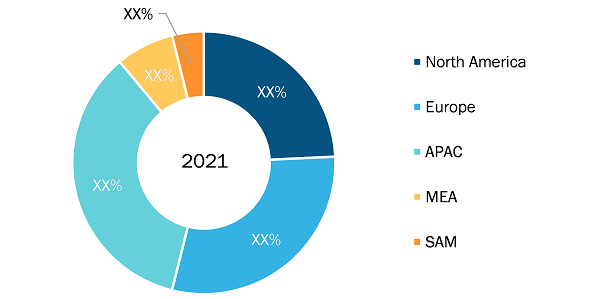The collision avoidance and object detection maritime market is expected to reach at US$ 722.09 million by 2028; registering at a CAGR of 8.2% during 2022–2028, according to a new research study conducted by The Insight Partners.
Rising Number of Ships to Drive during 2022–2028
Collision avoidance and object detection systems have become a necessity for all types of seafaring vessels. ~80–90% of trade and shipping activities are carried out through seas and oceans. Technological developments have further triggered marine traffic, which caused navigation to become more demanding for deck officers. Vessel collisions have remained a major problem as accidents cost the maritime industry millions of dollars annually. The increasing number of ships globally in operation is creating a potential scope for the deployment of safety systems in the maritime industry. Collision avoidance and object detection systems warn or assist sailors in avoiding imminent collisions, thereby reducing the risk of accidents. Various technologies are combined for development of such systems. Radar is one of the most common technologies utilized for collision avoidance and object detection in maritime industry.
Collision Avoidance and Object Detection Maritime Market Share — by Geography, 2021
Collision Avoidance & Object Detection Maritime Market Size and Forecast (2021 - 2031), Global and Regional Share, Trend, and Growth Opportunity Analysis Report Coverage: By Technology (LiDAR, Computer Vision, Radar, and Others), Application (Blind Spot Detection, Night Vision, and Others), and End User (Unmanned Surface Vehicle, Ships, and Autonomous Underwater Vehicle) and Geography
Collision Avoidance & Object Detection Maritime Market 2031
Download Free Sample
Source: The Insight Partners Analysis
The APAC collision avoidance and object detection maritime market is segmented into Australia, China, India, Japan, South Korea, and the Rest of APAC. Rapid advancements in technologies, favorable initiatives and economy digitization efforts by governments, and the accelerated pace of industrialization are among the factors propelling the overall economic growth of the region. With the overall proliferation, marine transportation activities in APAC are also growing at a significant pace. The volumes loaded and discharged at Asian ports make it one of the largest seafarer supply regions globally. Thus, the expanding fleets in Asian countries, such as China, Japan, and South Korea, are bolstering the collision avoidance and object detection maritime market growth in APAC.
The major stakeholders in the collision avoidance and object detection maritime market ecosystem include component suppliers, technology providers, shipbuilders, and end users. Suppliers of sensors, optics, chips, and other components are crucial stakeholders in the ecosystem of the collision avoidance and object detection maritime market. Technology providers enable the hardware and software to work in tandem. Shipbuilders include ship manufacturers, and yacht and cruise manufacturers. The main end users that require collision avoidance and object detection maritime are aftermarket, research & development, and military. The major collision avoidance and object detection maritime market players include Teledyne FLIR, Furuno, and Raytheon.
The collision avoidance and object detection maritime market is analyzed on the basis of technology, application, and end user. Based on technology, the market is segmented into LiDAR, computer vision, radar, and others. Based on application, the collision avoidance and object detection maritime market is segmented into blind spot detection, night vison, and others. Based on end user, the market is segmented into unmanned surface vehicles, ships, and autonomous underwater vehicles.
Benewake (Beijing) Co., Ltd.; Furono Electric Co., Ltd.; Garmin Ltd.; Orlaco Products BV; Raytheon Anschutz GmbH; Robopec SAS; Sea Machines Robotics, Inc.; Teledyne FLIR LLC; Terma A/S; and Velodyne Lidar, Inc. are key market players profiled during this study. In addition, several other important market players were studied and analyzed during this market study to get a holistic view of the global collision avoidance and object detection maritime market and its ecosystem.
During the COVID-19 pandemic, the demand for collision avoidance and object detection systems in maritime fell sharply due to the shutdown of international borders in various parts of the world, especially China, the US, India, and Europe. In first half of 2020, widespread lockdowns, travel restrictions, fast-rising unemployment, government rescue packages, and oil and stock market crashes were the key changes that prevailed in the governance of many countries. Ships, large cruises, and vessels found it challenging to keep maritime transport moving and trade flowing during the economic adversities, which hampered the demand for seafaring vessels, and components required in them, including collision avoidance and object detection systems, thus inhibiting collision avoidance and object detection maritime market growth.
Contact Us
Phone: +1-646-491-9876
Email Id: sales@theinsightpartners.com